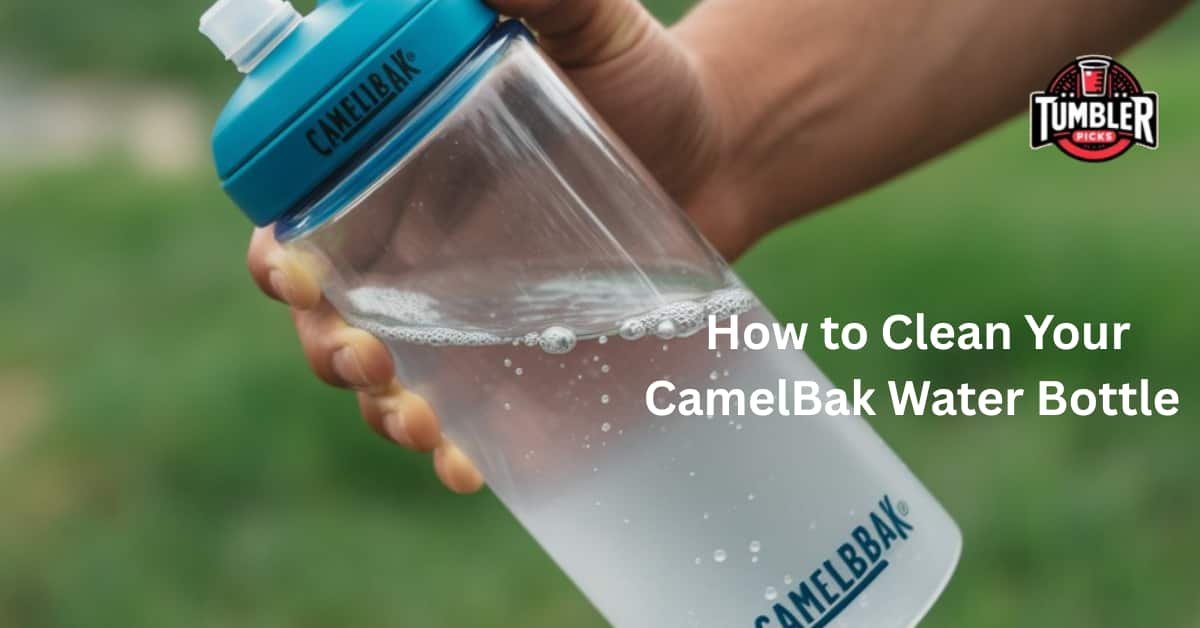If you’re into outdoor recreation or just coming back from a backpacking trip, keeping your Camelbak and hydration reservoir clean is a must. After long hikes, I used to feel that lazy mood and delay unpacking my backpack, but I quickly learned that a little gear spring cleaning helps a lot. Using warm water, mild soap, or cleaning tablets makes rinsing, deep cleaning, or even disinfecting super simple.
I usually fill the reservoir, shake the reservoir, pinch the valve, and let the cleaning solution flow through the drink tube and Big Bite Valve. For deeper grime, tools like a tube brush, Pure Flow, or the Crux Cleaning Kit come in handy. After washing, I always rinse, drain water, and air dry it using a Reservoir Dryer to prevent moisture during storage.

Table of Contents
💡 Why Cleaning Your CamelBak Matters
Your CamelBak is more than a water bottle—it’s your hydration companion on hikes, workouts, and daily commutes. But over time, it can become a breeding ground for bacteria, mold, and unpleasant smells.
Here’s why regular cleaning is essential:
✅ Keeps your bottle odor-free
✅ Prevents mold buildup in bite valves and lids
✅ Extends the life of your CamelBak
✅ Ensures safe, clean hydration every time
🧼 A dirty bottle isn’t just gross—it can impact your health.
🧽 What You’ll Need
Before you start, grab the following:
- Warm water
- Mild dish soap
- Bottle brush (long-handled)
- Straw brush or pipe cleaner
- White vinegar or baking soda (for deep cleaning)
- Optional: CamelBak cleaning tablets
🔗 Related: CamelBak Bite Valve Replacement Guide
🪥 Step-by-Step Cleaning Instructions
🔁 For Everyday Cleaning:
- Disassemble your bottle: Remove the lid, straw, and bite valve.
- Rinse with warm water to flush out leftover liquids.
- Add dish soap and fill the bottle halfway with warm water.
- Use a bottle brush to scrub the inside walls.
- Clean the lid using a toothbrush or sponge.
- Rinse all parts thoroughly with warm water.
- Let everything air dry completely before reassembling.
⏱️ Takes less than 5 minutes!
🧼 How to Clean the Bite Valve & Straw
The bite valve is where gunk often hides. Here’s how to clean it properly:
- Remove the bite valve and straw from the lid.
- Soak in warm soapy water for 15 minutes.
- Use a straw brush or pipe cleaner to clean inside the straw.
- Pinch the bite valve open under running water to flush it out.
- Rinse everything thoroughly and let air dry.
💡 Pro Tip: For a deeper clean, soak in a mix of water + 1 tbsp vinegar or baking soda.
🧴 Deep Cleaning & Mold Prevention
Do this once a week or after long hikes:
🔄 Vinegar Method:
- Mix 1 part white vinegar to 4 parts water.
- Fill the bottle, close the lid, and shake well.
- Let sit overnight, then rinse thoroughly.
🌿 Baking Soda Soak:
- Add 2 tbsp baking soda to warm water.
- Soak all parts (including lid, valve, straw).
- Rinse well and air dry.
Or use CamelBak’s own cleaning tablets for a hands-free deep clean.
🍽️ Is Your CamelBak Dishwasher Safe?
✅ Plastic CamelBak Bottles:
- Top-rack dishwasher safe.
- Remove all parts (straw, valve) before washing.
❌ Stainless Steel CamelBak Bottles:
- Not dishwasher safe.
- Hand wash only to preserve insulation and finish.
🚫 Never put the bite valve or straw near the dishwasher heating element!
🔄 Cleaning Plastic vs. Stainless Steel
| Feature | Plastic Bottle | Stainless Steel |
|---|---|---|
| Dishwasher Safe | ✅ Yes (top rack) | ❌ No |
| Scrub Gently | ✅ Yes | ✅ Yes |
| Deep Cleaning | Soak in vinegar or use tablets | Hand-wash only |
| Mold Resistance | Lower | Higher due to smooth interior |
📆 How Often Should You Clean It?
| Usage Frequency | Cleaning Schedule |
|---|---|
| Daily Use | Quick rinse after each use, full clean weekly |
| Occasional Use | Rinse after use, full clean before storage |
| Outdoor Adventures | Deep clean after each trip |
📣 Don’t wait until it smells—routine cleaning = longer lifespan!
🌟 Star Rating Table (Ease of Cleaning)
| Component | Rating (Out of 5) | Notes |
|---|---|---|
| Bottle (Body) | ⭐⭐⭐⭐☆ | Easy with a bottle brush |
| Lid | ⭐⭐⭐⭐☆ | Small crevices need extra attention |
| Straw | ⭐⭐⭐⭐☆ | Best cleaned with a straw brush |
| Bite Valve | ⭐⭐⭐⭐☆ | Needs regular cleaning to avoid buildup |
| Dishwasher Use | ⭐⭐⭐⭐☆ | Only safe for plastic bottles |
❓ Frequently Asked Questions
Can you use baking soda to clean a CamelBak?
Yes, you can—mix a couple tablespoons of baking soda with hot water, swirl it through your reservoir, pinch the bite valve so the solution reaches the tube, let it soak for about 30 minutes, then rinse thoroughly and air dry. This simple cleaning solution is effective, odor-free, and gentle on your CamelBak components.
Can I clean my CamelBak with dish soap?
Yes, you can clean a CamelBak with gentle dish soap and warm soapy water. Use a bottle brush to scrub the reservoir, tube, and bite valve, then rinse thoroughly to remove any soap residue. This simple method works well as part of your regular cleaning routine.
Do CamelBak cleaning tabs work?
Yes, CamelBak cleaning tabs are designed to be self‑dissolving and effectively remove taste and odor from your reservoir and tube. Customers and reviewers often say they “work well” and leave no aftertaste, making them a reliable option for keeping your hydration bladder fresh.
Are CamelBak cleaning tablets eco‑friendly?
Yes, these cleaning tablets are environmentally safe and biodegradable, free from chlorine, phosphates, preservatives, or fragrances, and formulated to be gentle on aquatic environments—so you can clean with confidence.
🧠 Final Thoughts
Cleaning your CamelBak water bottle isn’t just about aesthetics—it’s about your health, hydration, and the bottle’s longevity. Whether you use it daily or just for the gym, knowing how to clean each part (especially that sneaky bite valve!) is crucial.
With the right tools and regular maintenance, your CamelBak will always be fresh, odor-free, and ready for your next adventure.
Related Posts You’ll Love:


